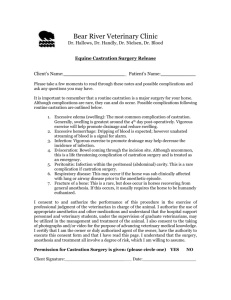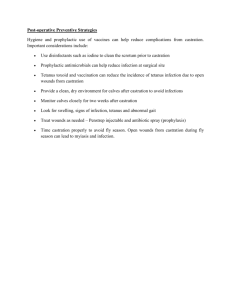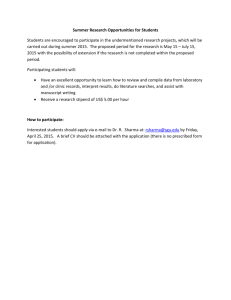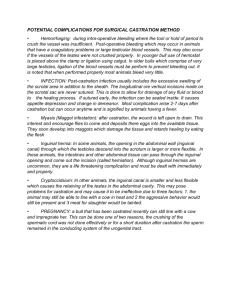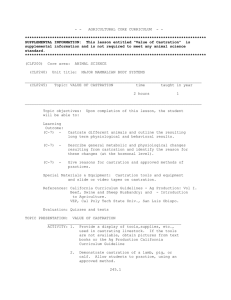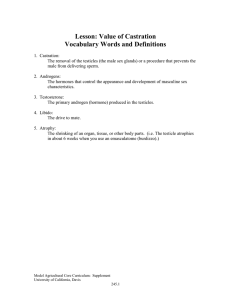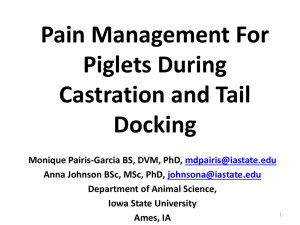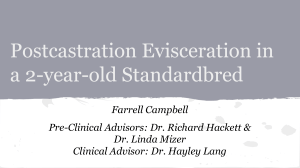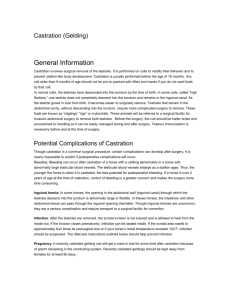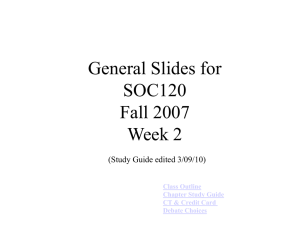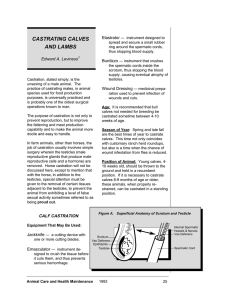swine 3_3 - Dr. Brahmbhatt`s Class Handouts
advertisement
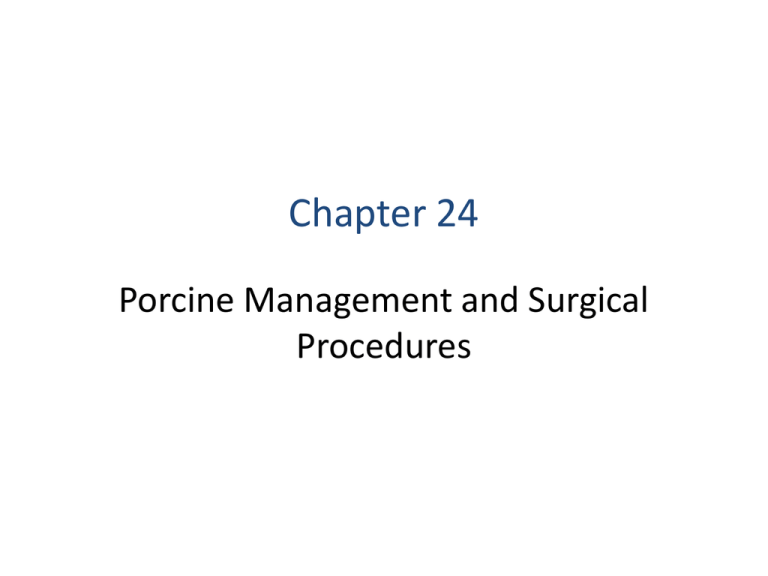
Chapter 24 Porcine Management and Surgical Procedures The true measure of an individual is how he treats a person who can do him absolutely no good. -- Ann Landers Objectives • Discuss the basic risks and possible complications associated with anesthesia and surgery. • Implement preventive measures when indicated. • Endoparasites • Ectoparasites Reading Assignment Chapter 24: Porcine Surgery Castration • Reason – In the United States and Canada, intact males cannot be marketed for meat – Due primarily to “boar taint” – ONSET OF PUBERTY – Castrated after puberty: “stagging” odor disappears 34 wks. After castration – Improve feed conversion – Easy to handle • Age: 2 to 4 weeks (some: 1-2 day old) Castration (cont’d) • Restraint • 50 lb. – hind limb or V trough • Procedure: • Check for hernia • Disinfectant • Lidocaine: 2-3 ml, 25 gauge needle • Bard Parker no. 3 scalpel handle - no. 12 blade • The testicles are pushed cranially the incisions and pulled to expose the spermatic cords. • A longitudinal 1-cm incision is made directly over each testicle. • Spermatic cords must be severed : “tease”/ piglet emasculator. • Antiseptic – heal in 5 – 7 days Castration (cont’d) • Older pigs – Open castration – Heavily Sedated – Lateral recumbency – Aseptic preparation – Cords ligated – Complications: seroma/ hematoma complications Questions??? Hernias • Hereditary • Age : 9 to 14 weeks, Elasticon, hernia clamp • Types – Umbilical hernias • are common • not easily seen • Hard and painful: strangulation/ infection – Scrotal hernia: larger • Fix before castration • Options – Herniorrhaphy: pet or pure bred, antibiotics: 3 – 5 days, close: skin and SC tissues – These animals are often destined for slaughter. C-Section • Dystocia • Stabilize patient – IV fluids (LRS or 0.9% saline) – ear vein; 30 – 40 ml/kg/hr, maintenance: 4 ml/kg/hr – Dextrose, calcium – Pre – op antibiotics: penicillin • Various anesthetic regimens – Local: L lateral recumbency, inverted L block – Anesthesia: dorsal recumbency • Clip and aseptically prepared • SPF piglets Detusking • Reason: danger to other pigs and humans • Canine teeth grow continuously – Small in female stop growth – 2 yr. – Male: grow continuously • Tusk trimming/ Detusking – General anesthesia or heavy sedation with hog snare/ snubbing rope – Every 10 – 12 months • Trimming procedure – Gigli wire: mm over gum, pulp not visible • Detusking procedure – Complete removal – Risk: fractures References • K Holtgrew-Bohling , Large Animal Clinical Procedures for Veterinary Technicians, 2nd Edition, Mosby, 2012, ISBN: 97803223077323 • http://www.docstoc.com/docs/21337238/Swi ne-Barn-Surgery
